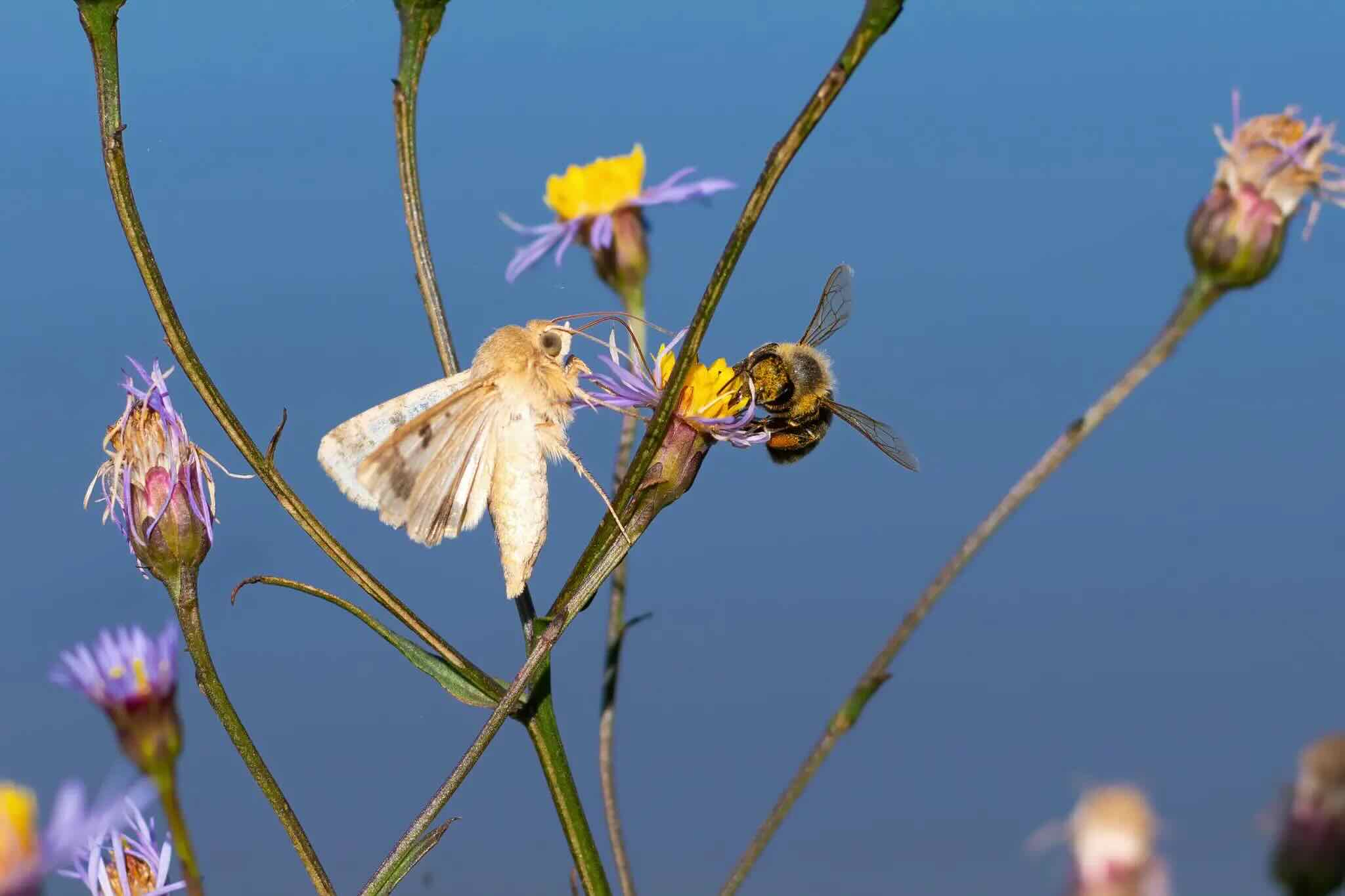
Photo Credit: Kovesi, P (2022). A Bee and a Moth on a Plant [Photograph]. Pexels.
Photo Legend: An owlet moth and a honeybee pollinate an aster flower while consuming
nectar.
Even in mid-October you can still see and hear people working outside, whether it be mowing, leaf blowing, or weeding. We’re approaching the final weeks of the harvest season and many folks have taken the first step to preparing their yards and gardens for winter. However, we’re not the only ones preparing for winter- there are hundreds of pollinator species seeking shelter from the cold including bees, butterflies, hummingbirds, and moths!
There are 843 species of butterflies and moths and 465 species of bees found in Michigan. Some bees (such as honeybees or bumblebees) burrow into the ground in order to survive the cold as they become lethargic when temperatures are consistently below 50 degrees Fahrenheit. They may also seek shelter within hollow plant stems, under logs or stones, or within leaf litter. Other pollinating insects may also seek similar shelter conditions to lay eggs so their offspring can return in the spring.
But why do we care so much about making sure these insects have a chance at surviving? Pollinators are essential to allow our crops to produce food, flowers, and spices. Bees have coevolved to pollinate about 80% of all flowering plants around the world based on the plant structure, but their population is rapidly dropping. Between 2004-2018, a 61% decline in bee population was documented in Michigan alone by the USDA National Institute of Food and Agriculture. The decline is easily explained by habitat loss due to urban development, pesticide use, and climate change.
When we winterize our yards and gardens, we can take extra steps to see these pollinator populations increase. At the WCC Food Forest, the Students 4 Sustainability club recently winterized the garden. We weeded the beds and we cut non-woody native plants to about 8 inches. We left the leaves, the 8 inch stalks, and some bare soil for native bees and other invertebrates to overwinter. You can learn more about the recommendations we followed from the Xerces Society of America.
Tips for Fall Clean-up in your yard to help invertebrates, including native bees, overwinter:
- Leave the leaves
- Cut non-woody plants to 8 inches, and leave the stalks
- Leave some bare dirt
Additional Reading
- Lake Erie Nature & Science Center – Honeybees
- Michigan State University – Better Habitat for Bees
- Michigan State University – Bees Interrupted
- USGA – The Buss on Native Bees
- Xerces Society – Detroit Pollinator Habitat Kits
- A2Gov – Pollinator-Aware Yard Care Program
Tags: Sustainability
